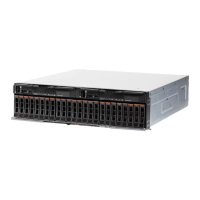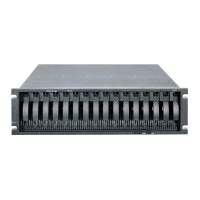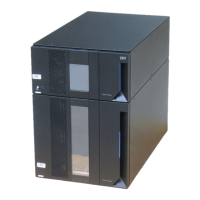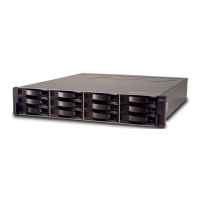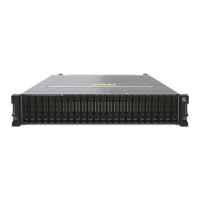Chapter 4. IBM System Storage DS planning and configuration 253
To locate this setting, highlight the logical drive in the Storage Manager menu and select
Storage Subsystem Change Cache Settings....
Cache block size
This is the size of the cache memory allocation unit and can be either 4 K, 8 K, 16 K, or 32 K.
This provides more flexibility in managing and customizing your cache setup on the DS5000
storage subsystem, based on specific requirements. By selecting the proper value for a
particular situation, improvements can seen in caching efficiency and performance. For
example, if applications mostly access the data in small blocks up to 8 K, but a 16 K for cache
block size is used, then each cache entry block is only partially populated. Blocks will always
occupy 16 K in cache to store 8 K (or less) of data. This means only up to 50% of cache
capacity is effectively used to store the data. This inefficiency lowers the performance. For
random workloads and small data transfer sizes, 4 K is better.
Alternatively, if the workload is sequential and a large segment size is used, as is the case
with multimedia applications, it is better to use the larger cache block sizes of 16 or 32 K. A
larger block size means a lower number of cache blocks and reduces cache delays. In
addition, a larger cache block size requires fewer cache data transfers to handle the same
amount of data.
4.10.7 Media scan
Media scan is a background process enabled by default that checks logical drives over hard
disk drives for defects by reading the raw data from the disk and writing it back. This detects
possible problems caused by bad sectors of the physical disks before they could eventually
disrupt normal data reads or writes. This process is sometimes known as
data scrubbing.
The media scan runs on all logical drives in the storage subsystem that meet the following
conditions:
1. The logical drive is in an optimal status.
2. The logical drive is not defined over Solid State Drives.
3. There are no modification operations in progress.
4. The Media Scan parameter is enabled.
The media scan continuously runs in the background, using spare cycles to complete its
work. The default media scan is for a scan every 30 days, that is, the maximum time the
media scan has to complete the task. During the scan process, the DS5000 storage
subsystem calculates how much longer the scan process will take to complete, and adjusts
the priority of the scan to ensure that the scan completes within the time setting allocated.
Once the media scan has completed, it starts over again and resets its time for completion to
the current setting. This media scan setting can be reduced. However, if the setting is too low,
priority is given to the media scan over host activity to ensure that the scan completes in the
allocated time. This scan can impact performance, but will improve data integrity in the long
term.
The media scan is enabled for the entire storage subsystem. The system-wide enabling
specifies the duration over which the media scan runs, which by default is 30 days. By default,
the media scan process runs without checking redundancy data. You can optionally specify
whether to do a redundancy check or to stop media scan.
Important: Media scan is an option available for logical drive space configured on hard
disk drives, not over Solid State Drives. Unused hard disks or hot spares are not scanned.
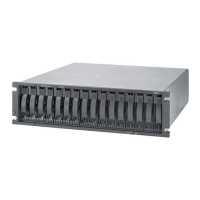
